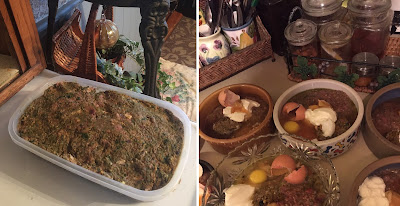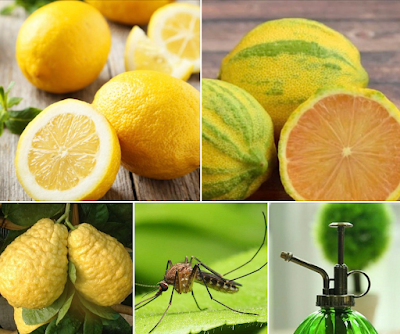Probiotic Foods for Dogs and Cats, Sauerkraut Recipes for Dogs, Kefir Recipe for Dogs and Cats, Natural Support for Gut Health and Immune Health
In this article:
1.0 Sauerkraut and Kefir Health Benefits
- Sauerkraut Health Benefits (for dogs)
- Kefir Health Benefits (for dogs and cats)
2.0 Sauerkraut Recipes (for dogs)
- Simple Sauerkraut Recipe Ingredients
- Confetti Sauerkraut Recipe Ingredients
- Preparation Instructions
- Daily Serving Recommendations
- How To Introduce Sauerkraut to your Dog's Diet
3.0 Kefir (for dogs and cats)
- Kefir Recipe
- Daily Serving Recommendations
- How to Introduce Kefir to Your Dog and Cat's Diet
4.0 Smoothie Recipes Made with Goat Milk, Kefir or Yogurt
- Smoothie Recipes for Dogs
5.0 Cautions
1.0 Sauerkraut and Kefir Health Benefits
1.1 Sauerkraut Health Benefits
for dogs
Sauerkraut is a quick, easy and inexpensive fresh probiotic that's excellent for dogs.
Fresh sauerkraut is
a very concentrated source of probiotics.Typically fresh 'kraut contains 13 strains of
bacteria and about 100 times more probiotics than most supplements; it is simple to make and most
dogs enjoy the taste.
The
health benefits to your dog are many, including:
- Aids in the digestion process
- Boosts the immune system
- Helps prevent cancer (sauerkraut contains compounds called isothiocyanates which protect against cancer)
- Fights E. Coli, salmonella
- Helps prevent candida
- Has anti-inflammatory properties (inflammation can trigger some cancers).
- Rich source of vitamin A, B, C and E
- Calcium and magnesium, iron, potassium, copper and manganese
- Excellent source of antioxidants
- Helps alleviate anxiety and depression
- Supports omega-3 fatty acids
- Reduce allergy symptoms
1.2 Kefir Health Benefits
for dog and cats
Kefir is
a creamy, naturally carbonated, fermented dairy product that dogs and cats can enjoy.
Typically one
tablespoon of kefir contains 5 billion beneficial bacteria. As a rich and concentrated
source of beneficial bacteria the probiotics found in Kefir contribute to
health in a wide variety of ways:
Contains
a substantial amount of B Complex vitamins, Calcium, vitamin A, Vitamin D,
magnesium, phosphorus.
- Contains tryptophan, and essential amino acid;
- Helps prevents illness
- Is easily digestible
- Is excellent for the immune system
- Natural antibiotic and anti-fungal properties
- Promotes anti-cancer and anti-tumour activity in the body
- Promotes the faster healing of wounds
You
can read more about the benefits in detail here.
So,
let’s look at some simple but great recipes to make your own sauerkraut and
kefir for your dog and cat. You can eat the sauerkraut and kefir as well.
Using organic products to make the recipes is always better than using non-organic, but either way the end product will be beneficial for your dog and cat.
Using organic products to make the recipes is always better than using non-organic, but either way the end product will be beneficial for your dog and cat.
2.0 Sauerkraut Recipes
2.1 Simple Sauerkraut Recipe Ingredients
You'll Need:
- 1 medium green cabbage
- 1 tbsp of organic salt - NOT iodized salt/table salt. Choose from i.e. grey sea salt, Celtic sea salt, Himalayan salt, etc.
- Water - enough to submerge cabbage in jar(s);
- 1 large mixing bowl
- 1 Mason jar (sterilized)
Optional
ingredients
- Fresh dill
- Juice of one fresh lemon.
This
recipe makes about 1.6 litres of sauerkraut. See below for preparation
instructions and amount to feed your dog.
2.2 Confetti Sauerkraut Recipe Ingredients
You'll Need:
- 1 medium green cabbage
- 1 medium red cabbage
- 2-3
tbsp of sea salt or Himalayan salt
- 1-2 cups water - enough to submerge cabbage in jar(s)
- 1 large mixing bowl
- Mason jars (sterilized)
Optional
ingredients
- Grated carrot
- Fresh dill or caraway seeds
- Juice of one fresh lemon
- 2-4 tbsp of fresh shredded ginger
This
recipe makes about 3 litres of sauerkraut.
2.3 Preparation Instructions
Simple Sauerkraut, Confetti Sauerkraut
Make
sure that you wash the cabbage prior to grating it and cut off any spots that
are not fresh and healthy looking, cut off the bottom of the cabbage and save
it. Once you place the prepared cabbage in to the Mason jar you can use the
cabbage bottom that you have saved to press the cabbage to the bottom of the
jar. Make sure that all utensils, surfaces, bowls, etc. are very clean in order
to ensure that you do not contaminate the end product.
Shred
or grate the cabbage, then mix in the salt. If you are using the optional
ingredients mix them in as well. Press the resulting mixture into a mason jar.
Make sure that you leave 2 to 3 inches empty at the top of the jar. Remember
that the cabbage is going to ferment in order to become sauerkraut so you need
to allow some space for the fermentation process to occur. Cut the cabbage
bottom so it fits into the jar on top of the shredded cabbage and then firmly
press the cabbage down into the jar until the juice rises above the shredded
cabbage.
Now you are ready to seal the jar. You can squeeze fresh lemon juice over the jar rim and then the lid - this will ensure that any undesirable microbes are killed and that the sauerkraut remains pure and uncontaminated.
The
sealed jar(s) should be placed in a location were they can sit at room
temperature, away from direct light for a period of 4 to 10 days. Although you
can eat the sauerkraut after 4 days, the longer the sauerkraut is allowed to
sit and ferment the more variety and quantity of probiotics present - so
waiting 10 days is best!
During
the fermentation period you will likely see the cabbage (soon to be sauerkraut)
bubble and change color. You can periodically open the lid(s) to allow a
little of the gas to escape, then use a clean utensil to push the cabbage back
down leaving it submerged in the liquid.
Once
you open a jar to eat it make sure you refrigerate it. The finished sauerkraut
should be provided to your dog raw not heated as heating will destroy the
probiotic quality as heat kills live bacteria. Kept in the refrigerator the
fresh sauerkraut will preserve for several months.
2.4 Daily Serving Recommendations for Dogs
- ½ tsp to 1 heaping tbs, 1x to 2x per day.
Medium
size dogs
- 2 tbs to 3 heaping tbs, 1x to 2x per day.
Large
dogs
- 3 to 4 heaping tbs, 1x to 2x per day.
2.5 How
to Introduce Sauerkraut to Your Dog’s Diet
As
with any new foodstuff that you introduce to your dog’s diet you should go
slow. The probiotics in sauerkraut are highly concentrated so give your dog’s
system time to adjust. For the first few days to a week cut the recommended
dosage in half. This will avoid stomach upset as your dog’s system adjusts to
the increased quantity of good flora in their GI tract. You can bring the daily
dosage up to the recommended amount over the space of a few days to a week or
two. If your dog has a negative reaction to the new food stop providing the
food to your dog. All of my dogs get kefir, sauerkraut and yogurt on a daily
basis. None of my 10 dogs have ever had a negative reaction to any of these
food stuffs.
3.0 Kefir
Recipe
for dogs and cats
3.1 Recipe
You'll need the following utensils:
- 3 wide-mouth quart jars complete with lids
- 1 wooden slotted spoon or fork
- 1 wire whisk that will fit inside jar
- 1 plastic strainer
You'll Need:
- Whole, milk sufficient to fill the jars leaving a little space at the top.
- 1 tsp of kefir grains per each quart of milk.
- You will need to purchase the kefir grains (or kefir starter) from a health food store or on-line.
- You can also purchase Kefir making kits.
The Best Type of Milk To Use
- Goat milk.
- However you can use buffalo, cow, sheep or other ruminant animal milk.
- Raw, unpasteurized.
- However you can use pasteurized milk.
- Grass fed, pastured free range.
- However you can use organic sourced milk.
Preparation
- Sterilize the jars and all utensils
- Place the appropriate qty of kefir grains in the bottom of each jar
- Fill the jar with milk leaving to 2 to 3 inches empty at the top of the jar - the kefir will need room to ferment
- Secure the lids on to the jars
- Put the jars in a paper bag(s) and place the bags in a warm place (the ambient air temperature must be about 210C/70oF. Leave the jars to sit, undisturbed for 24 hours
- After 24 hours the contents in the jars should have a soft, delicate solid consistency and when the jar is slightly tipped over there should be a little liquid that separates from the solid
- Place the jars (still in paper bags) in a cool, dark place to cure for an additional 8 to 10 hours - this time the ambient air temperature should be as close to 100C/50oF as possible
- After the 8 to 10 hour curing period gently shake the jar(s), remove the lid(s), use the wooden spoon to remove the kefir grains (you will notice that the kefir grains are larger as they have grown during the during process). Place the grains in another clean jar, secure a lid and set the jar aside. Once the kefir has been removed from the cured jar of kefir, use a whisk to beat the kefir to a smooth blended consistency
- Place the strainer over the whisked kefir and pour the kefir into another clean jar, secure the lid - the kefir is ready to drink, or you can refrigerate it for later
3.2 Kefir Daily Recommended Serving
- 1 tbs to 2 tbs, 1x to 2x per day
Medium
size dogs
- 1/8 cup, 1x to 2x per day
Large
dogs
- 1/4 cup, 1x to 2x per day
X-Large dogs
- 1/3 to 1/2 cup, 1x to 2x per day
3.3 How
to Introduce Kefir to Your Dog and Cat's Diet
As with any new foodstuff that you introduce to your dog’s and cat's diet you should go slow. The probiotics in kefir are highly concentrated so give your dog’s and cat's system time to adjust. For the first few days to a week cut the recommended dosage in half. This will avoid stomach upset as your dog’s system adjusts to the increased quantity of good flora in their GI tract. You can bring the daily dosage up to the recommended amount over the space of a few days to a week or two. If your dog has a negative reaction to the new food stop providing the food to your dog and cat. All of my dogs get kefir, sauerkraut and yogurt on a daily basis.
4.0 Smoothie Recipes for Dogs
Smoothie recipes for dogs made with kefir, goat milk or yogurt:
5.0 Cautions
5.1 Self-Selection
Allow your dog and cat to indicate if they want sauerkraut (dogs only), or kefir (cats and dogs).
If your dog or cat indicate they do not want the item offered, do not force them to eat it.
Respect your dog and cat's indication.
Learn more about self-selection:
- Go to this article.
5.2 Yeast Overgrowth
If your dog or cat has an active yeast overgrowth (candida overgrowth, candida bloom), do not give her fermented foods (sauerkraut, kefir, fermented goat milk, apple cider vinegar, etc.).
Fermented food feeds the yeast which results in additional yeast overgrowth and an increase in symptoms.
5.3 Mast Cell Issues
Never give fermented food (sauerkraut, kefir, fermented goat milk, ACV, etc.) to dogs and cats with mast cell issues.
Fermented food is high in histamine which will increase mast cell activity.
Holistic Diet, Nutrition, Wellness Services Tailored to Your Individual Dog and Cat
For information about my holistic diet, nutrition and wellness services, visit my holistic wellness services page.
Maintain good health | Address acute and chronic health issues | Pre and post surgery support and recovery
My holistic wellness services are available worldwide via video consultation.
🌎 USA | Canada | UK | Europe | Australia | New Zealand | Asia | South and Central America | Africa | UAE
📱FaceTime | Facebook | Skype | WhatsApp
To set-up your holistic wellness consultation get in-touch via email, go to my contact me page.
Holistic Behavioral Services for Your Dog
For information about my holistic behavioral services, visit my holistic behavioral services page.
For dogs of all ages, sizes and breeds.
My behavioral services are available worldwide via video consultation.
🌎 USA | Canada | UK | Europe | Australia | New Zealand | Asia | South and Central America | Africa | UAE
📱FaceTime | Facebook | Skype | WhatsApp
To set-up your holistic behavioral session get in-touch via email, go to my contact me page.
Affiliations to Companies
✓ None.
✓ I don't sell food, supplements, or other products.
✓ I'm not aligned with any companies.
Article and graphics by Karen Rosenfeld.






















